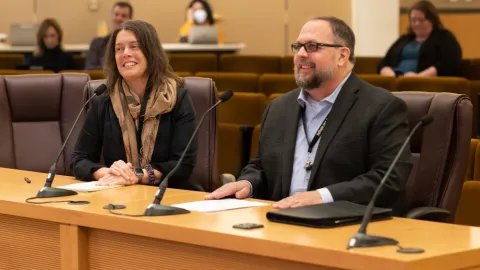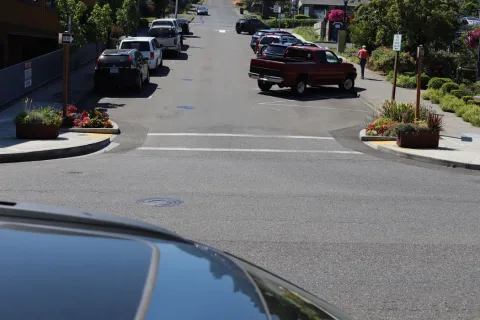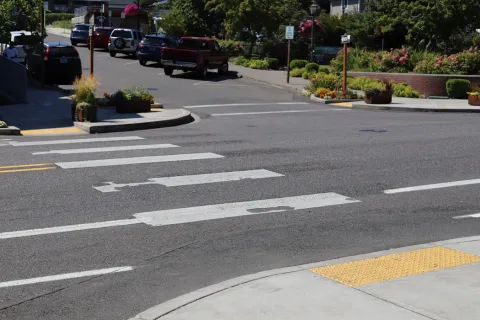On Thursday, March 9, the Multnomah County Board of Commissioners unanimously approved a resolution to adopt Multnomah County Transportation’s ADA Transition Plan.

“It is specifically focused on ramps and accessibility to curb ramps,” Multnomah County Transportation Planning and Development Manager, Jessica Berry said.
Berry said the plan focuses on ways to improve accessibility for people crossing the street. The ADA requirements apply to any County-maintained road with a curb ramp. Most of the roads with the ramps are in urban areas because that is where there are existing sidewalks and street crossings.
Transportation started work on the plan in 2016, by doing an inventory of County ADA ramps that do not meet accessibility standards.
“We had people go out and take an inventory of the curb ramps to identify whether or not it met current ADA standards,” Berry said.
Berry talked about truncated domes which meet ADA requirements. Truncated domes are the portions of curbs that are bumpy, a tool that’s specifically designed to help people with vision impairment or low vision know where they can cross the street.
Designing curb ramps with slopes that are easy to navigate and have enough space to make it easier for people using mobility devices to maneuver, is another example that would improve accessibility and meet ADA requirements.

“When development is proposed, we evaluate the impact of the development on the transportation system and then require the developers to construct improvements that are proportional to the impact they are going to have,” Henrichsen said. “If that development and improvements encompasses ADA ramps that are out of compliance or necessitates installation of new ADA ramps, then we require that as part of the development permits.”
While the transition plan does not specifically address sidewalks, Transportation requires developers to fix them if they’re not ADA compliant.
Henrichsen said the other way Transportation can bring ADA ramps into compliance is by including them in design plans for capital projects. The department prioritizes its capital projects based on several criteria including upgrading ADA ramps.
“The more curb ramps that are fixed, the higher the project scores,” Henrichsen said.
Once the County had an inventory of ramps, it then developed a prioritization tool which identified which ramps needed to be replaced due to accessibility barriers. In 2021, the County also added viaducts and areas around the Willamette River bridges to that inventory. Transportation then created a schedule to remove those barriers.
Transportation drafted the Transition Plan and posted it on the County website for community input and review prior to asking the Board for approval. The plan will be updated every five years.

“I’m curious how often ADA standards change,” Commissioner Jayapal said. “Looking at how long it takes to run through the list, I’m wondering by the time we’re done will we have to start all over again?”
Berry and Henrichsen both noted they don’t expect ADA standards to change soon, as they were just updated within the last decade.
Henrichsen said Transportation is focusing on seeking funding for projects that bring curb ramps into compliance through annual one-time only funding requests. In fiscal year 2020, Transportation was awarded $500,000 in one-time only funds to design 52 ramps that ranked as the highest priority to replace.
In fiscal year 2023, Transportation was awarded $1.4 million in one-time only funds to continue this work on an additional 40 ramps. This year, Transportation is requesting $1.7 million from the Board for work on more than 100 ramps.
While the ADA Transition Plan is focused on curb ramps, Berry said Transportation is continuing to look for ways to improve accessibility across the department, including working with its ADA work group and Safe Routes to School program.
Transportation is also reviewing accessibility of SeeClickFix, an app where people can report issues in the right-of-way. Berry said the department will also update its design and construction manual, to ensure the County meets standards and accessibility requirements for capital projects.